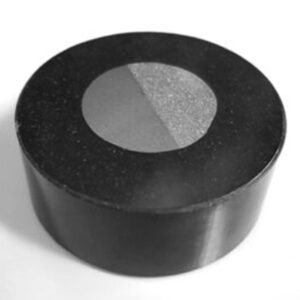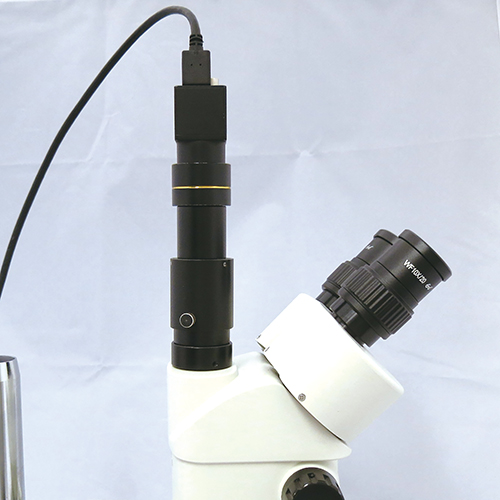Pre-processing for metallographic observation and measurement
2631 Views |

1. What is pre-processing for observing and measuring metal structure?
Pre-processing is required to observe the metallographic structure using a microscope.
Broadly speaking, the following four types of pretreatment are common.
①Sample cutting
②Resin embedding
③Polishing
④Etching treatment
2. Each pre-processing method
①Sample cutting
A large sample specimen is cut into small pieces using a cutting machine.
②Resin embedding
The cut sample is hardened with resin.
The reasons and purposes for embedding it in resin are as follows.
・Maintaining the edge shape of the sample
・Holds the shape of the sample so that it does not deform.
・Create a flat shape that is easy to observe
There are various types of resins to be cured, and they are selected depending on the material and characteristics of the sample.
- Typical resin -
・Acrylic resin
・Bakelite resin
・Epoxy resin
・Melamine resin
Each resin has different properties and colors, as well as different curing methods.
There are various types such as thermoplastic, thermosetting, natural curing, UV light irradiation curing, and two-component mixture curing.
The sample is placed in a cylindrical case and hardened with resin.
For heat curing, a heated embedder is used, and for UV light curing, UV light is irradiated.
③ Polishing and mirror finishing
Polish the surface of the metal sample specimen.
Generally, a polishing machine is used.
There are manual and automatic types of polishing machines, the former being suitable for experts and the latter suitable for beginners.
The manual type is suitable for experts as the degree of polishing tends to be uneven depending on the force with which you press the sample with your hands.
The automatic type is suitable for beginners, as it polishes automatically by fixing the sample to the sample fixing jig, which prevents uneven polishing.
Polish the sample using water-resistant abrasive paper for rough polishing to fine polishing.
Polish using the wet method (while dripping water) in the order of coarse to fine.
Precision polishing uses cloth, buffing, and alumina powder to create a mirror-like finish.
Therefore, it is necessary to change the number of waterproof abrasive paper many times.
There are two types of polishing machines, one-layer type and two-layer type.The two-layer type is more expensive but more convenient.
Once the mirror surface has been achieved, wash the sample surface with running water.
After washing, dry it with a dryer.
④Etching treatment (surface corrosion)
The polished surface of the sample is immersed in an etching solution (corrosive solution) that matches the material and properties of the sample.
Etching processing is performed for a time that matches the concentration of the etching solution and the material and properties of the sample.
After etching, wash off the etching solution with water, wash with ethyl alcohol, etc., and dry with a dryer.
Graphite spheroidization rate before etching
Graphite spheroidization rate after etching
3.Microscopic observation of metal structure
After the pretreatment process described above, the metal structure can finally be observed.
The mirror-polished surface of a correctly pretreated sample specimen is observed under a microscope.
Observe the metal structure by enlarging the structure and adjusting the focus.
We have metallurgical microscopes and USB cameras for microscopes.
Please see below for product details.
Inverted metallurgical microscope (ultra high magnification microscope)
GR-29J-C3J
USB3.0 camera for microscope (5 million pixels)
HDCE-500T
Inquire about this product
Tel: 02-664-2246
Mail:info@shodensha.co.th
Business hours 8.30 - 17.30 (Closed on weekends & public holidays)



